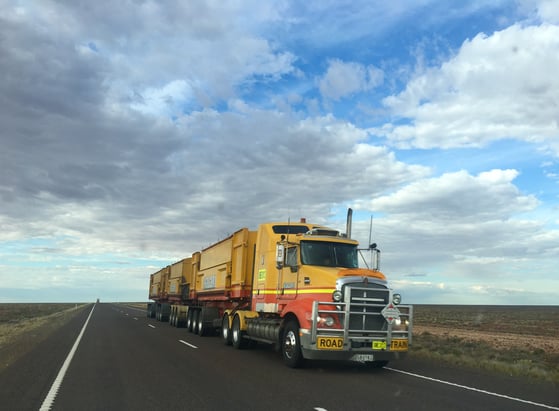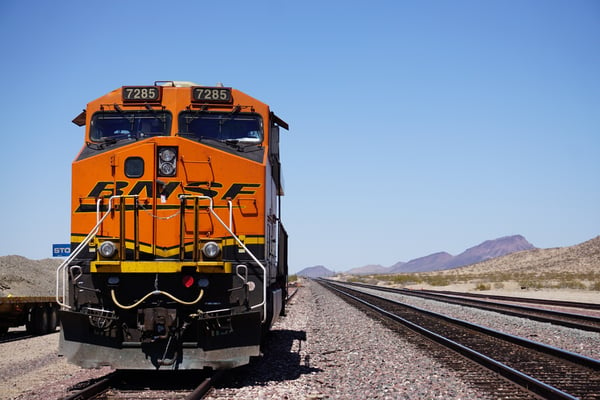REDWOOD LOGIN
Redwood PortalLTL
SCS
SCS Support
Rockfarm
 The 2018 capacity crunch has been even more impactful than originally anticipated. Raised transport rates have become inevitable, slow and off-time deliveries are common, and small ecommerce retailers are losing shipment space to larger organizations.
The 2018 capacity crunch has been even more impactful than originally anticipated. Raised transport rates have become inevitable, slow and off-time deliveries are common, and small ecommerce retailers are losing shipment space to larger organizations.
How is this capacity crunch impacting different transportation modes and the overall shipping industry moving forward?
What has been causing the transportation crisis?
These obstacles all influence one another to have a complex effect on the cost, reliability, and future for the overall transportation industry. It’s not limited just to a lack of trucks—this capacity is hitting everyone in transport, and it’s hitting everyone hard.
Full truckload (FTL) transportation has experienced the fastest and heaviest effects of the capacity crisis. Full truckloads are the traditional method of shipping, when one company uses an entire truck to send their goods from one location to another. But, in a time of capacity crisis and exorbitantly high transport costs, this means that the shipper needs to completely fill the truck to the brim in order to get their money’s worth from the shipment.
FTL simply can’t handle the capacity crisis. Full truckloads are too rigid and expensive, and they neglect small to medium size shippers who don’t have entire truckloads of goods to move.
FTLs have also felt a lot of pressure from the ELD mandate. Their drivers aren’t able to work as much, and the travel radius is much smaller. The inability to make up for the capacity crisis with over-time and intricate driving maps makes it impossible for FTLs to fight against the crunch.
Since FTL is feeling serious effects from the capacity crisis, a lot of shippers are turning to less than truckload (LTL) as a solution. This is when goods from multiple shippers are consolidated on a single truck. This is more efficient and cost-effective, while allowing for more flexibility in pickup, delivery, speed, and reliability.
LTL is also significantly less expensive than FTL. Shippers are paying for a portion of a truck, rather than an entire truck. In a time where transport rates are sky-high, these reduced shipping costs are highly attractive.
LTL shipments are especially common for “dense” packages, meaning smaller but heavier goods. Most shipping carriers are now switching to a dimensional pricing system, where pricing is based on freight density. Smaller, heavier packages cost less to ship than larger, lighter packages. LTL companies are rewarding shippers for taking up less space on their trucks as a way to combat the crisis.
Although LTL has become the key solution during the trucking capacity crisis, it has still felt its own effects. More and more shippers are turning to LTL transport, which means demand is high and supply is still low. This is causing prices to climb and 3PL companies to get more particular about the clientele they serve. A lot of recent regulations have also impacted LTL shipment, which has further deepened the impact of the capacity crisis.
Parcel shipping, especially for the last mile, has even taken a hit by the crisis. The major parcel carriers set their rates based on existing shipping rates throughout the country. That means a price rise in FTL and LTL creates a rise in parcel costs. In fact, both FedEx and UPS saw a 4.9% increase in rates this year, even for their small package shipments. The government’s USPS even saw a 2.7% increase so far this year.
This tells us that the capacity crisis isn’t just impacting long-distance shipments. It’s hit the drayage sector with a full force, which is going to have a direct impact on consumers and their ecommerce habits.
 The in-land trucking capacity crisis isn’t contained just on the road, though. A shortage of trucks has created a web of hurdles throughout the transport system.
The in-land trucking capacity crisis isn’t contained just on the road, though. A shortage of trucks has created a web of hurdles throughout the transport system.
Because there aren’t enough trucks to go around, at least 20% of shippers have decided to move to rail and air transport. Some shippers are finding that rails are even shortening transit times compared to road, which is encouraging an even greater influx to train.
This is putting an unexpected and unprecedented strain on trains and planes for transport. Their fast increase in demand has put a strain on their own capacity.
These hiccups in air, rail, and ocean all damage the intermodal supply chain. Any goods that use more than one form of transport instantly have higher costs and slower delivery times than they have in the past.
For example, a greater increase for rails has made trains run off-schedule and boost rail price rates. Running off schedule means it’s more challenging for transporters to organize pickups and deliveries. On-road trucks end up waiting around for late rail deliveries significantly longer than they might when waiting for a truck to pull into the hub. This volatility is killing predictability, which is further straining the already minimized capacity.
Basically, there aren’t enough trucks to go around, so shippers are moving to other methods. But intermodal organization hasn’t been perfected, which is damaging capacity even more.
Beating the capacity crisis—both as an individual shipper and as the collective—isn’t going to be easy. There needs to be a collaboration between all modes, companies, and shippers in order to see this through.
Technological advancements seem to be the wave of the future to help handle the crisis. Self-driving trucks, AI transportation management systems, and blockchain technology are especially allowing for more dynamic shipping both on-land and intermodal.
At LTX Solutions, we’ve already started implementing tech practices and systems that take our business to the next level. We see the capacity crisis for what it is, and we’ve acquired advanced methods to help us compete.
Find out how we can handle your shipments. Reach out right now to get started.